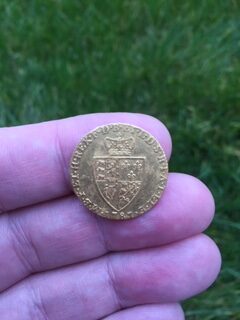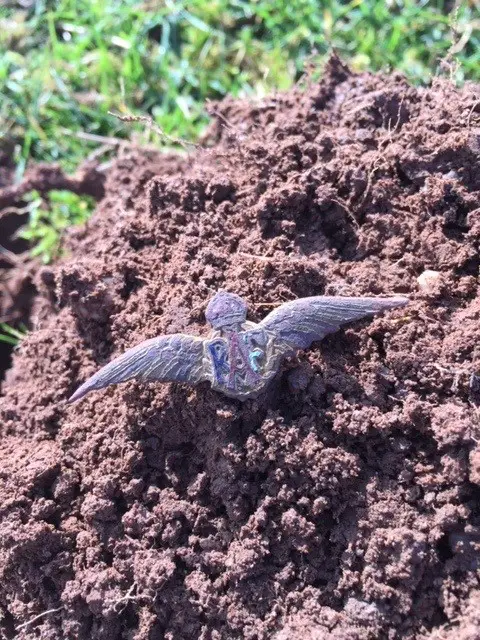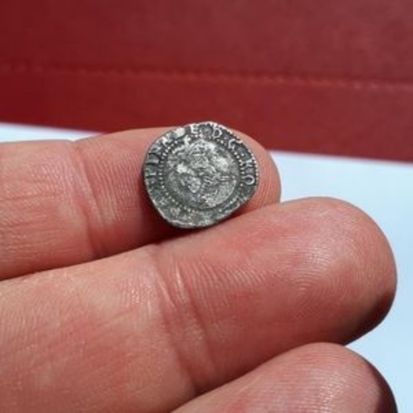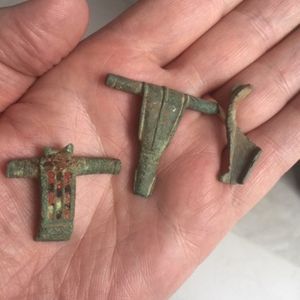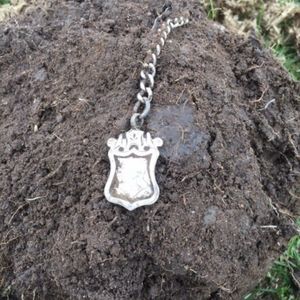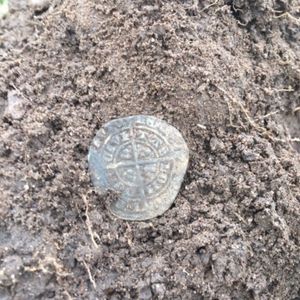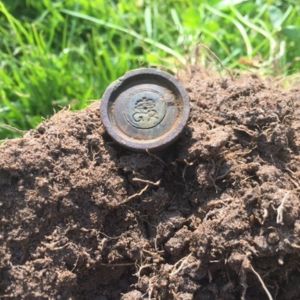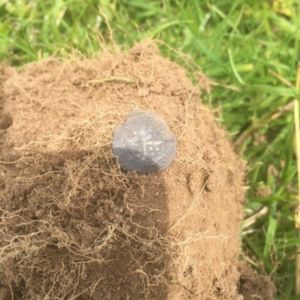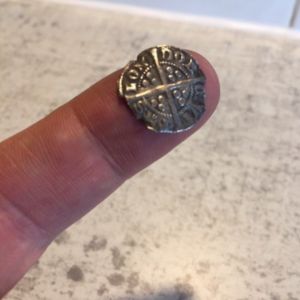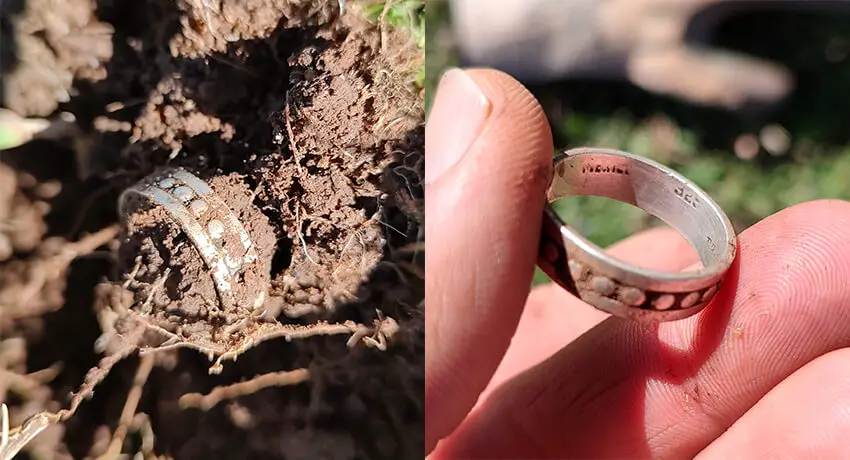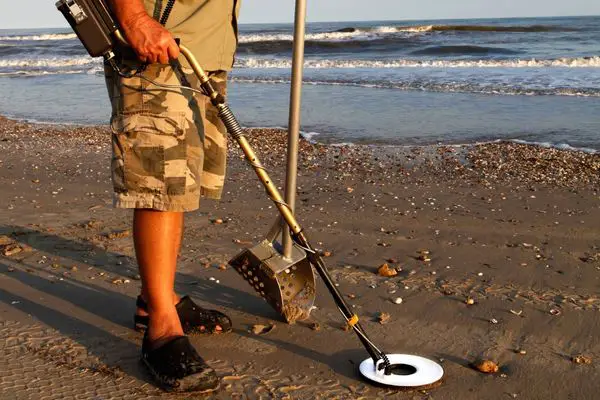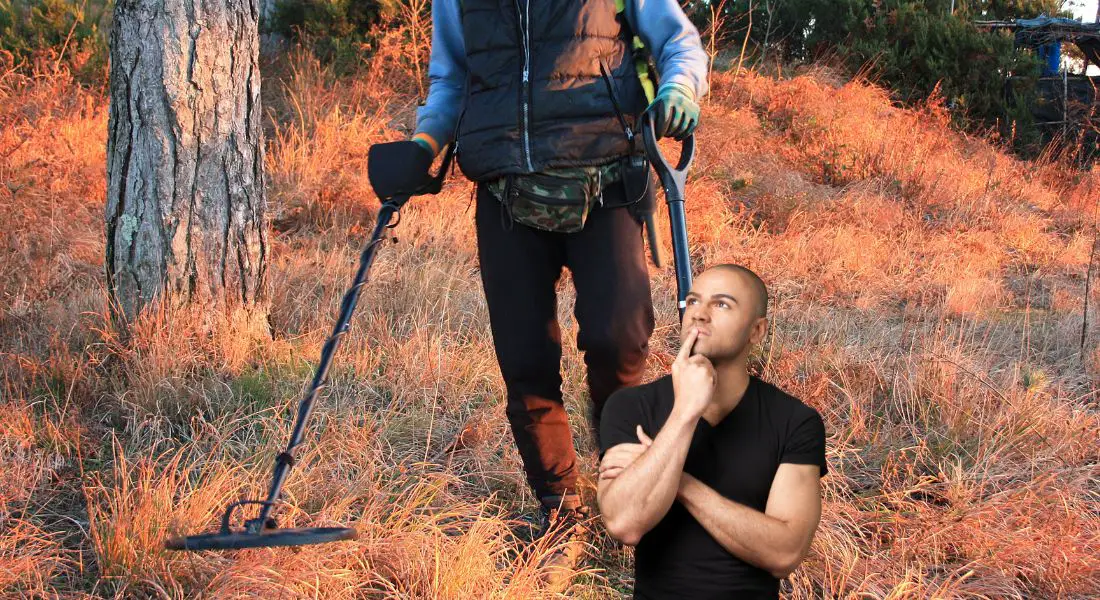Contrary to popular myth, metal detectors can and do detect aluminium. Detecting aluminium and foil targets happen quite often by hobby metal detectorists.
When you actually start thinking about it, you would be surprised how many trash items are made from aluminium.
These can typically include aluminium foil from discarded food packaging, costume jewellery, parts from farm machinery, drinks cans, ring pulls, those really annoying tubes to treat livestock.
I have even found a few broken dog tags engraved with a dogs name and the owners telephone number! I have an article covering exactly what a metal detector can detect here.
At this juncture, can I just stress that I am using the UK spelling of “aluminium” and not the US spelling of “aluminum” as I am based in the UK.
Can I also dispel the myth that aluminium can block a metal detector or go undetected. It is perfectly detectable by VLF (very low frequency) or PI (pulse induction) metal detectors.
Does aluminium trigger metal detectors?
Yes, aluminium will trigger a metal detector. On a similar vein, the detection of aluminium and the way a metal detector is set up with regards to its discrimination pattern is worth talking about.
I have spoken before about the differing styles of hobby metal detection between the US and the UK.
This directly relates to the types of coinage that’s been used over the particular history of these respective countries. I touch on this in my article metal detecting for beginners here.
When looking at an American made metal detector, the coinage types will either be displayed on the control box decals or within the icon displays in the LCD panel.
Metal detectors made for use in the UK or Europe tend not to have these coin icons on the face plates.

In respect of US coinage, they have a more standardised coin history which makes it infinitely easier to identify target numbers when displayed on a screen.
Each standard coin type will have a corresponding target number and will only differ slightly depending on its orientation, corrosion, proximity to another target or its depth.
Very often you will see US detectorists predict quite accurately what a coin will be before it’s even dug. Coinage in the UK covers a much longer history and is massively irregular in nature.
This can be in its size, material and thickness. The conclusion here to which I’m alluding to is that UK detectorists tend to at most, reject only ferrous targets and dig everything else non-ferrous due to UK historical coinage covering most of the target identification scale.
US detectorists know what target identification numbers to expect so can introduce a lot more discrimination or a particular pattern to reject unwanted targets. This is quite common when detecting in play parks or ball parks.
Where I’m going with this is that once you move from a beginner or novice and then to an intermediate skill set, you will very soon realise that if you set up a discrimination pattern that’s to aggressive, you could potentially be missing good targets.
Small gold jewellery can also be in the same range as some aluminium foil.
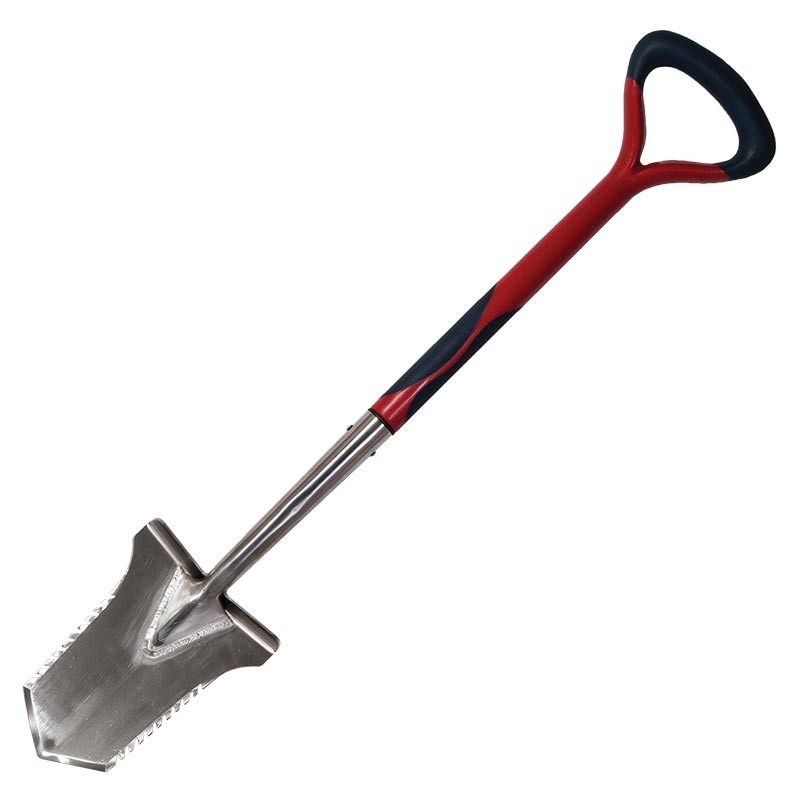
The Evolution Pro Cut
The ultimate accessary for the serious metal detectorist. Super strong, stainless steel specially designed spade.
Do metal detectors detect aluminium foil?
Yes, a metal detector will detect aluminium foil. So, aluminium foil that typically would be rejected in the US would be catastrophic if discriminated in the UK.
This is because that the target identification numbers for foil tend to fall in the same part of the conductive scale as small, silver medieval hammered coinage in the UK.
These are namely small pennies or even smaller cut halves or cut quarters. (You can read my article on medieval hammered British coins here)

I think you’ll agree that you would be extremely disappointed if you missed a silver, 600 year old coin just by thinking that you don’t want to dig any foil.
The take away here is that when in the UK, dig everything!…..or at least dig everything when you’re first starting out.
(You can read my article on which detector you need starting out in best metal detector for beginners here)
Judgement needs to apply here depending on where you are hunting of course. If for example you are having a fun day coin shooting in a play park, (with permission of course!), you could reject foil.
(You can read my article is metal detecting legal here!)
You could comfortably set up a discrimination pattern that would make your day much more productive by rejecting certain trash as you would know that there is a higher chance of you finding normal modern coinage rather than medieval hammered coinage.
Is aluminium foil magnetic?
The magnetic property of aluminium is negligible and can be viewed as non magnetic. Aluminium foil is a very thin sheet of aluminium that is rolled under pressure.
It comes in various guises from its pure form to several alloys which gives a wide range of tensile strengths and properties.
Foil thickness ranges from about 0.0065 mm (or 6.5 microns) to an upper limit of 0.2 mm (or 200 microns). Aluminium thicker than 0.2 mm is mostly defined as sheet or strip.

The magnetic property of aluminium is so minimal, it can be classed as non magnetic in it’s pure form.
The thickness of the aluminium will also be a deciding factor on where it will appear on the conductivity scale.
Thinner sectioned material will register quite low. Thicker sectioned material will register much higher.
(You can read my article on conductivity and metal detector discrimination here)
In that article, it drills down further into how a metal detector works and how metal detectors determine what type of metal is being detected.
This is down to a metal objects conductivity, resistivity, and magnetic properties.
The more information a detector can obtain, the more accurate the prediction. More information is gained from using more than one detecting frequency.
The most accurate detectors are “multi frequency” detectors. You can further read my article on multi frequency metal detectors here.

Unbeatable Multi Frequency!
You can now get the ultimate power of multi frequency technology over single frequency detectors with the Minelab Vanquish range of detectors.
The entry level Vanquish 340 now gives you ultimate depth, stability and sensitivity on all target types in every soil, including wet beach sand.
In conclusion
Okay, just to recap on what we’ve discussed today, hobby metal detecting is one of the most rewarding hobbies you can have.
In fact, it’s one of the only hobbies you can have that could potentially change your life. In fact, you can read my article discussing is metal detecting worth it here!
We’ve determined that the way metal detectorists hunt is slightly different from the US to the UK because of the UK history.
The UK has been conquered several times over its violent history and this has led us to have a wealth of finds from Roman to Saxon and from Viking to medieval.
I have some further articles on Anglo Saxons and Vikings here and one on the Romans and Roman coins facts here. This means that UK detectorists use very little discrimination as they don’t want to miss any small and interesting targets.
This does mean that in the UK, we will ultimately dig more trash but that’s the way it has to be I’m afraid if you want to uncover the most historical finds of a lifetime!
I hope you’ve found this short article useful or helpful. Stay safe and happy hunting!

Ultimate Tactical Packs!
Carry everything you’ll need for a detecting day like a First Aid kit, detector spares, finds boxes, batteries, snacks and drinks to rehydrate.
Never forget anything again with a belt pack!



